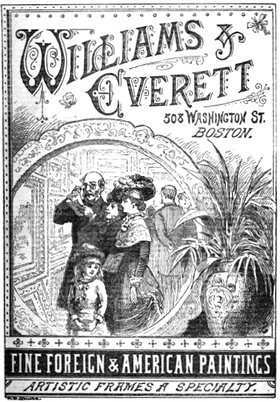And the Everett part is true (I have no idea about the poet William Blake), except that the emphasis needs to be on "300-year-old history" part of that sentence. Edward and Bill did share a common ancestor, "Deacon" John Everett (1676-1751), Edward's great-grandfather and Bill's 6th great grandfather (assuming I counted right). "Deacon" John gets the nickname, his tombstone implies, because he was the "first Deacon of the Church in the Second Parish in Dedham."
And indeed he is burred in the graveyard at the Second Parish Church.
So a distant relative indeed, and no need for us to include Edward's other achievements - such as being the main speaker at the Gettysburg dedication, where the President, Abraham Lincoln said a few words as well.
Bill Everett had a lot of distant "cousins" make good, as this article on Wikipedia shows - including Edward Everett Hale, Horace Everett, Blair Fairchild, Will Bagley, Pat Bagley, Robert Dean Frisbie, Harold Osborn, Edward Davis Jones, David Josiah Brewer, William Mark Felt, Amos G. Throop, Sarah Palin, Arthur Ochs Sulzberger, James Olds, Tom Seaver, Story Musgrave, Sam Shepard, Bradford Washburn, John Forbes Nash, Mike Lee, Rex Lee, Nicholas Longworth, and perhaps Ginger Rogers.
I note politically and religiously, from very conservative to very liberal.
However Everett has a closer and clearer kin, also on Wikipedia, his grandfather,and great grandfather.
William B. Everett (1856 - 1907), and William Everett (1821-1899), who owned one of the more famous art galleries in Boston.
This William B.'s mother maiden name was Blake, increasing the possibility that he was William Blake Everett as well.
As noted in Wikipedia, the co-owner of Williams and Everett was married to William Everett's sister, thus also kin - if not blood kin - to Bill. So Bill grew up in a home where art was not unsual nor where caraciture and cartoons, it's no wonder (per Wikipedia again) " Everett knew his father 'always wanted me to be a cartoonist"


